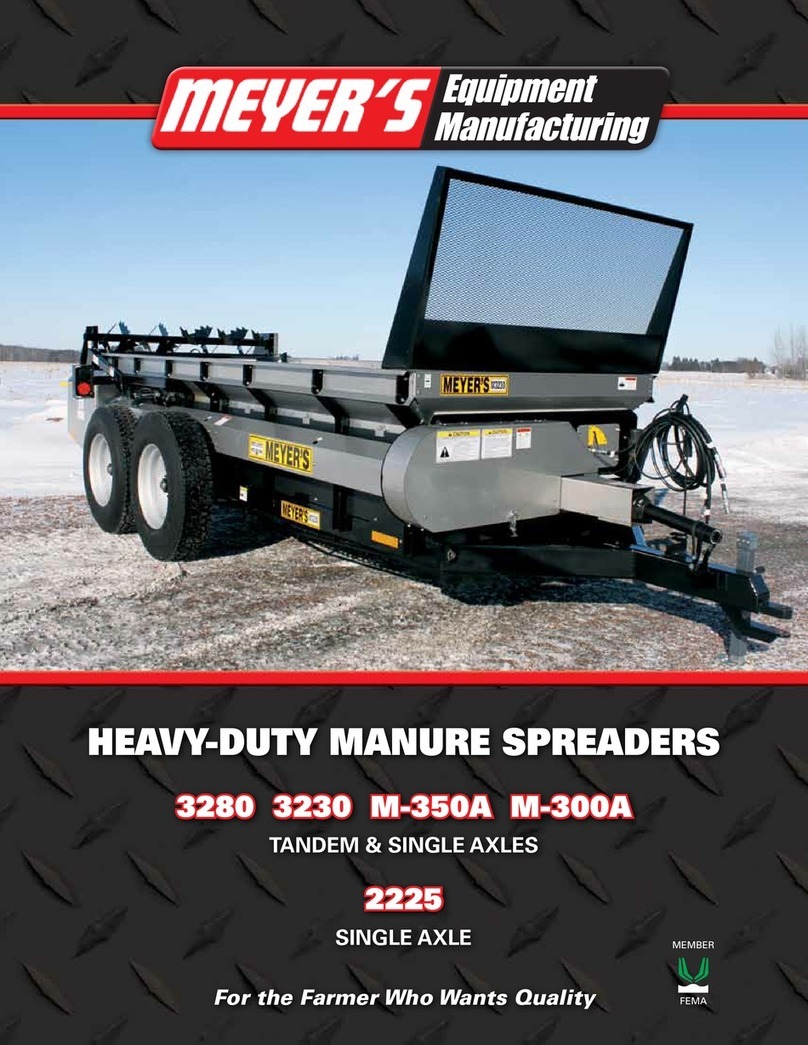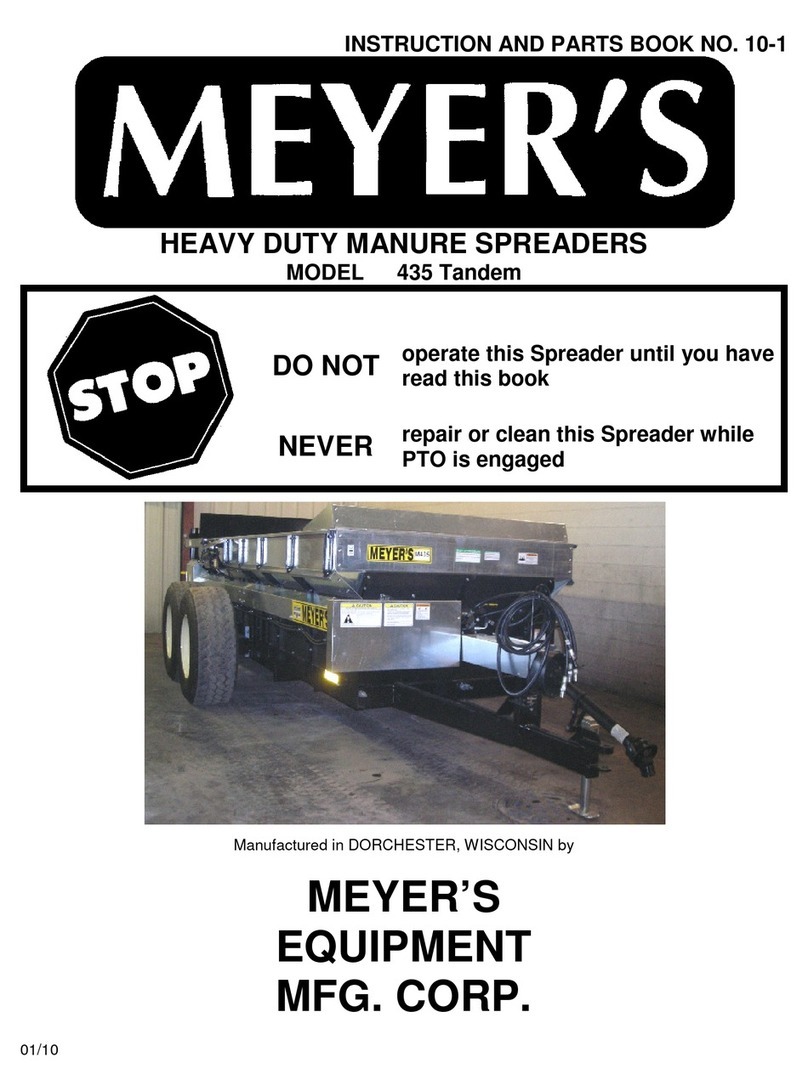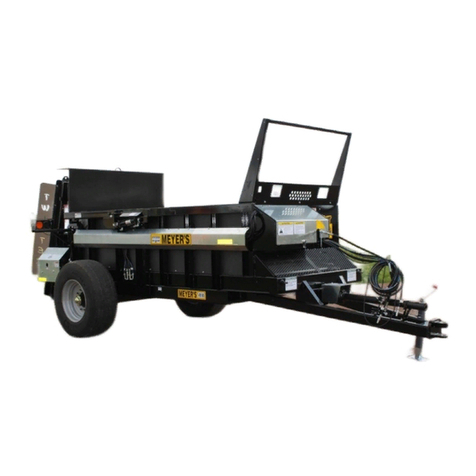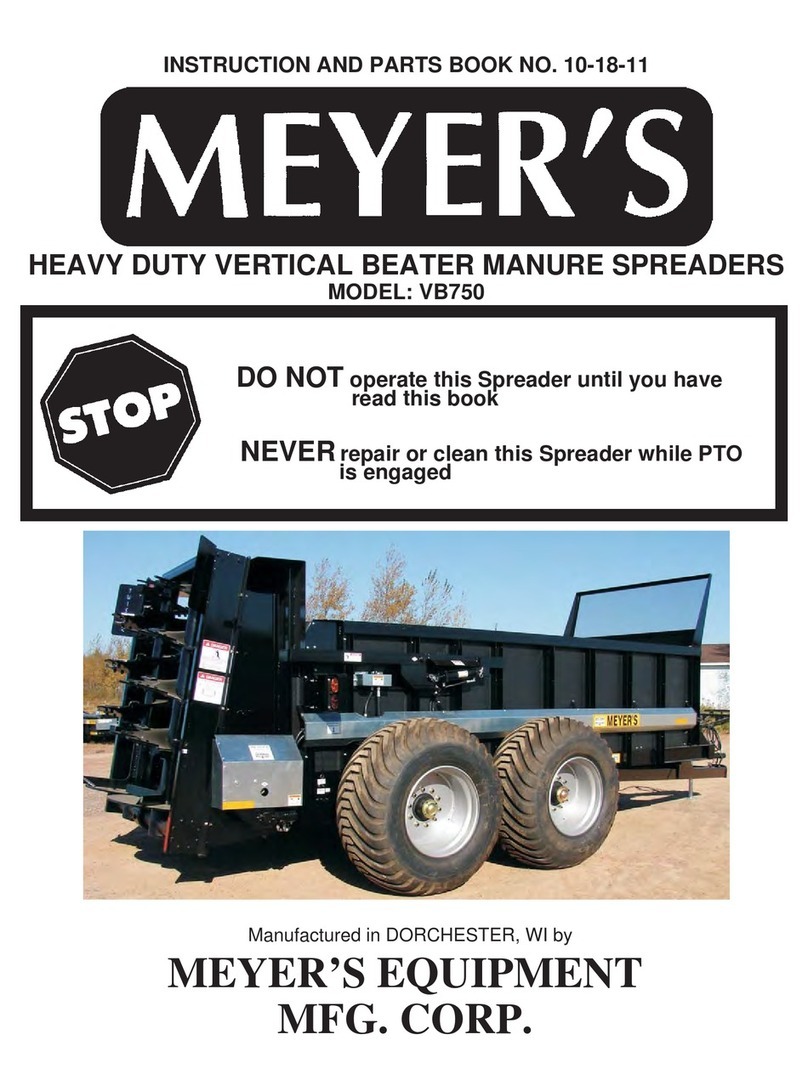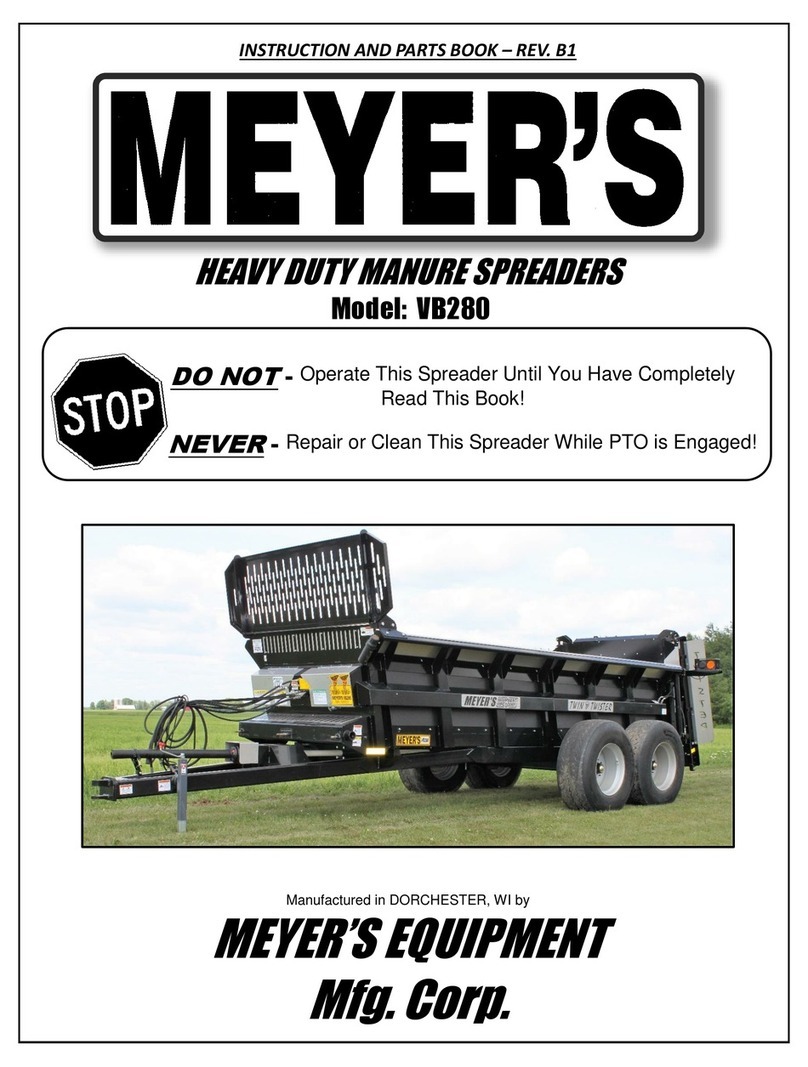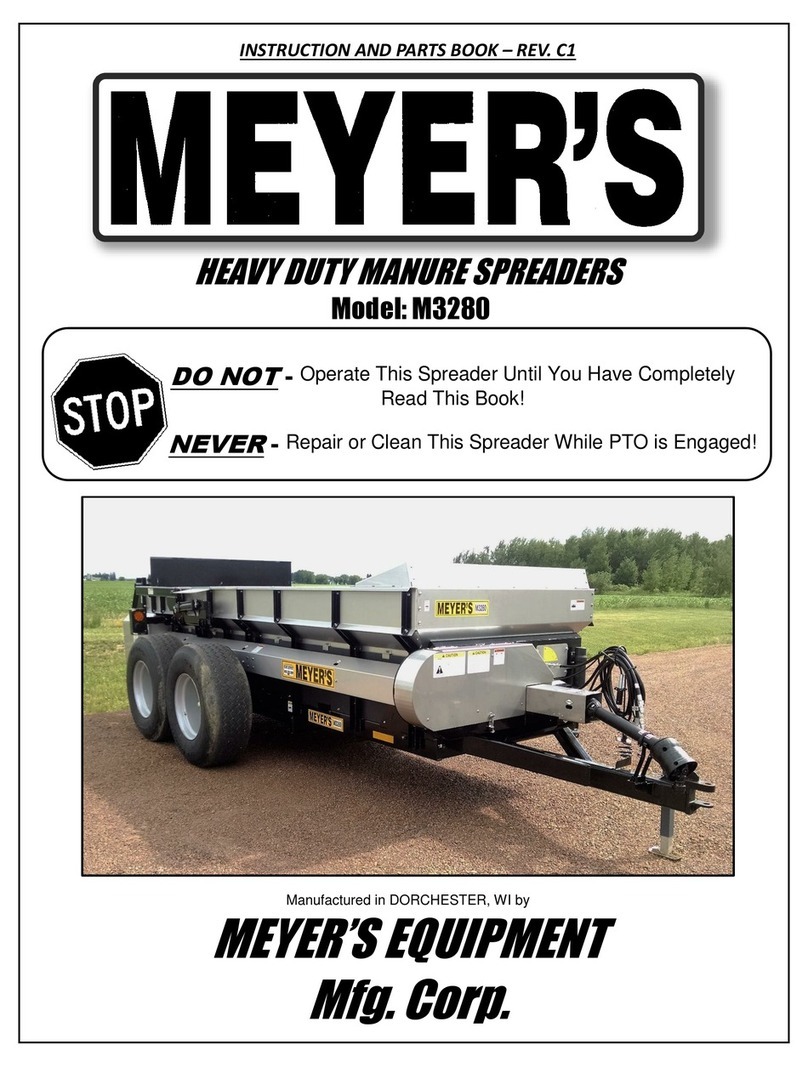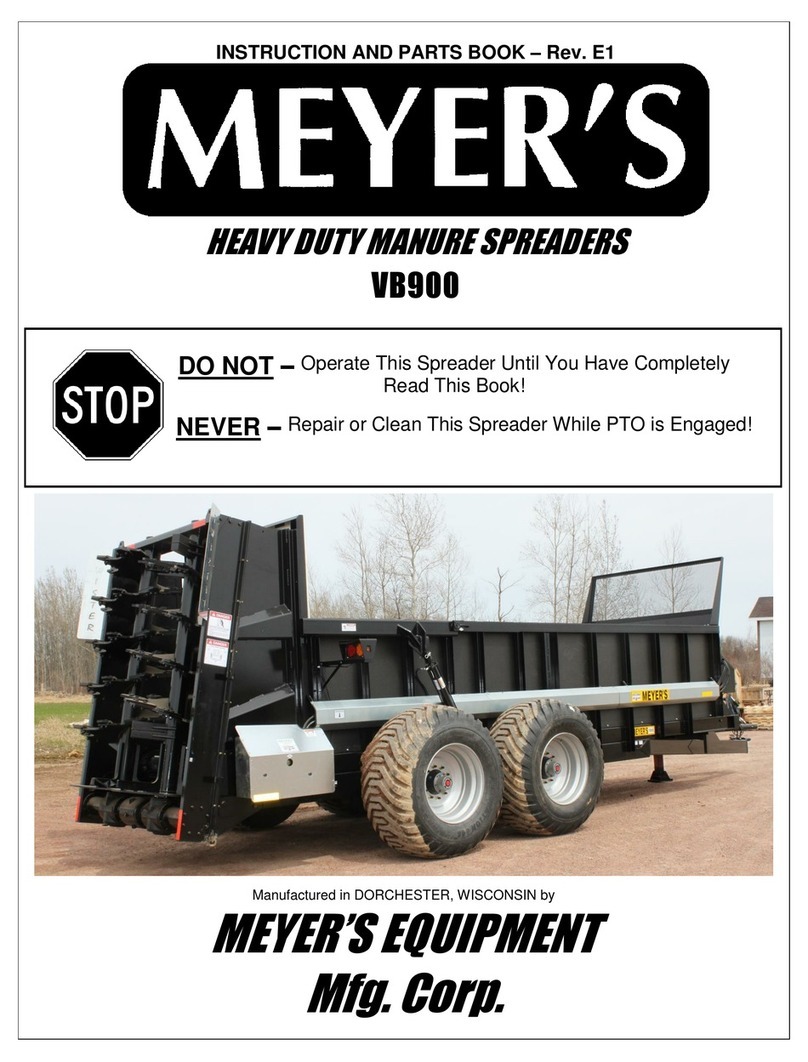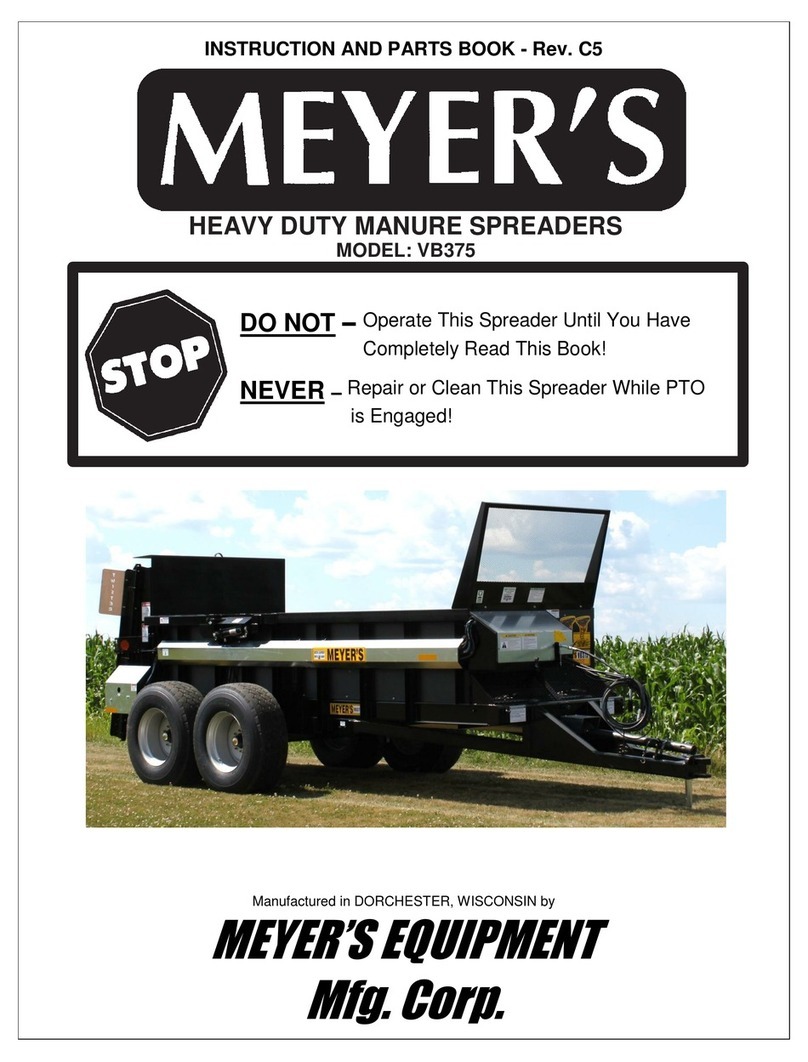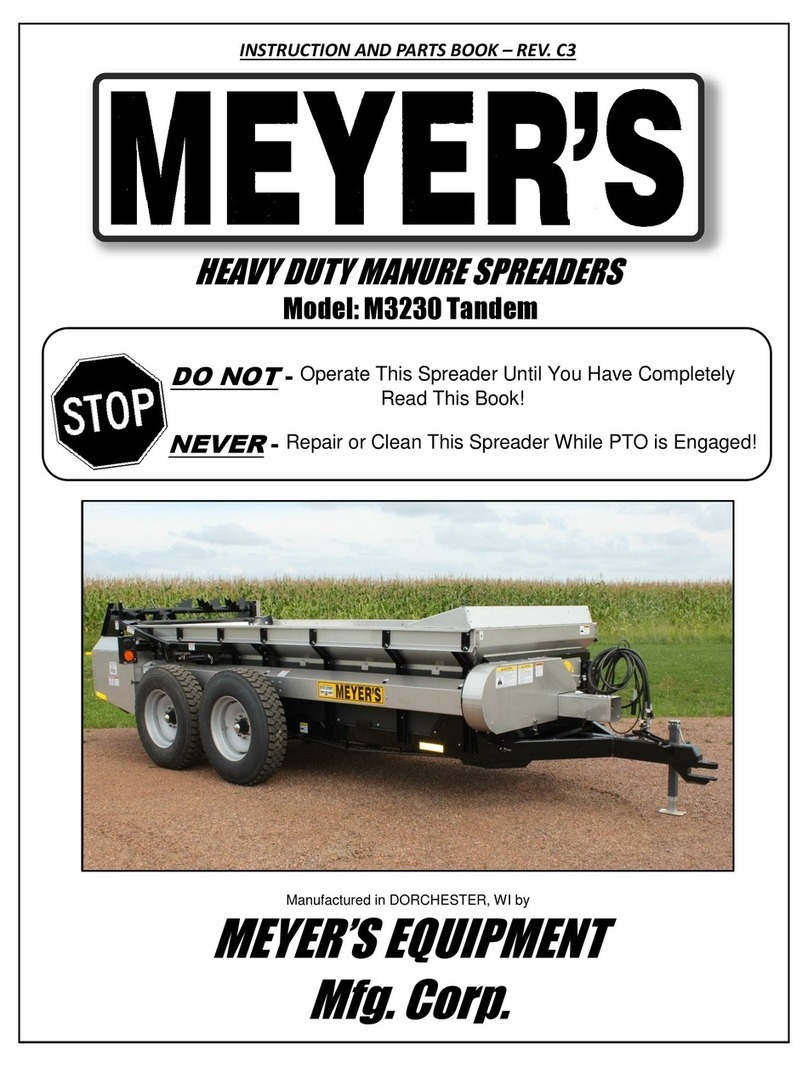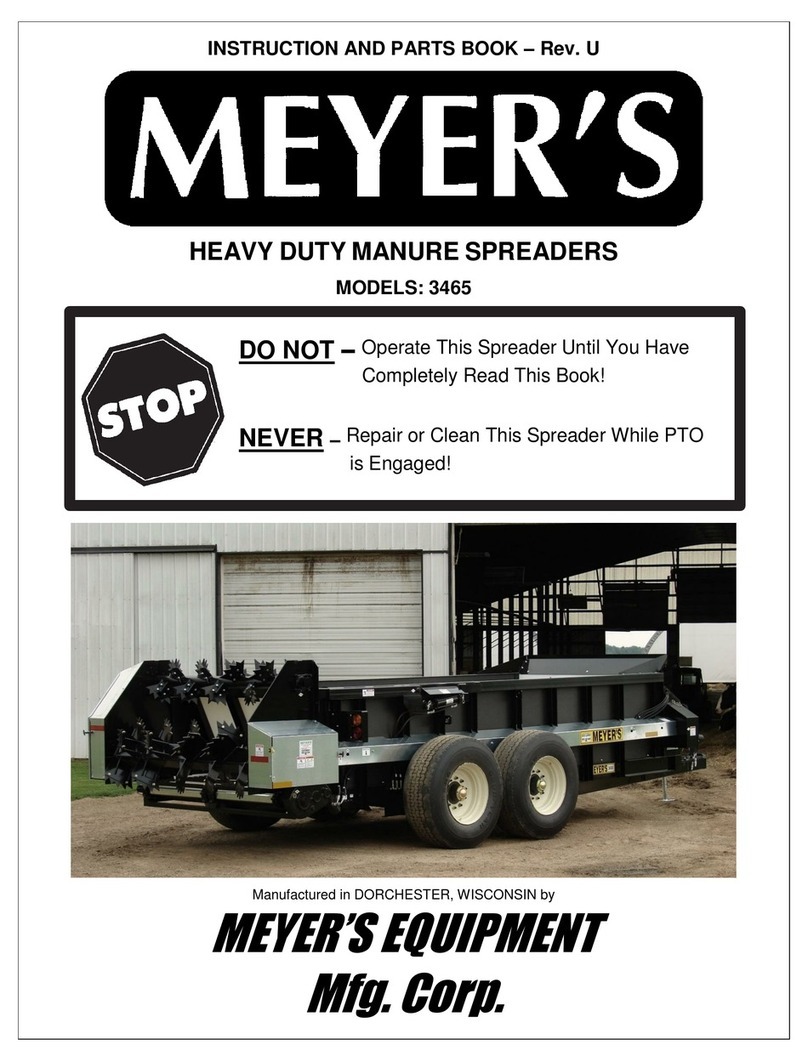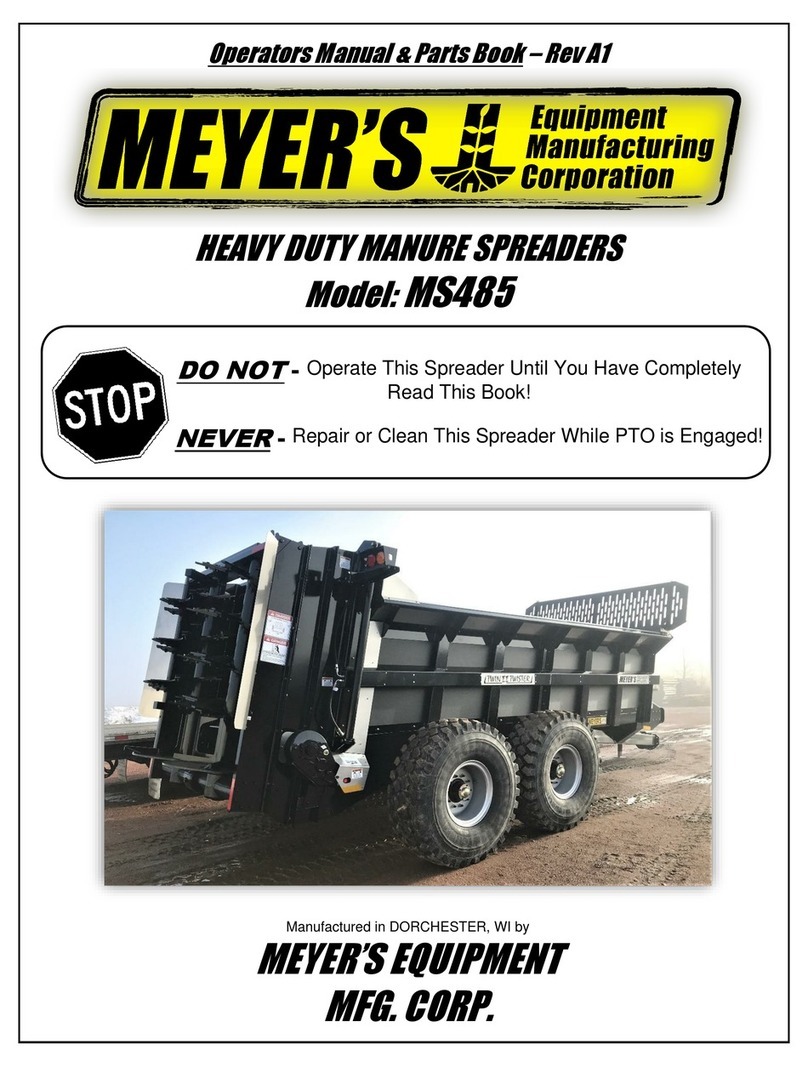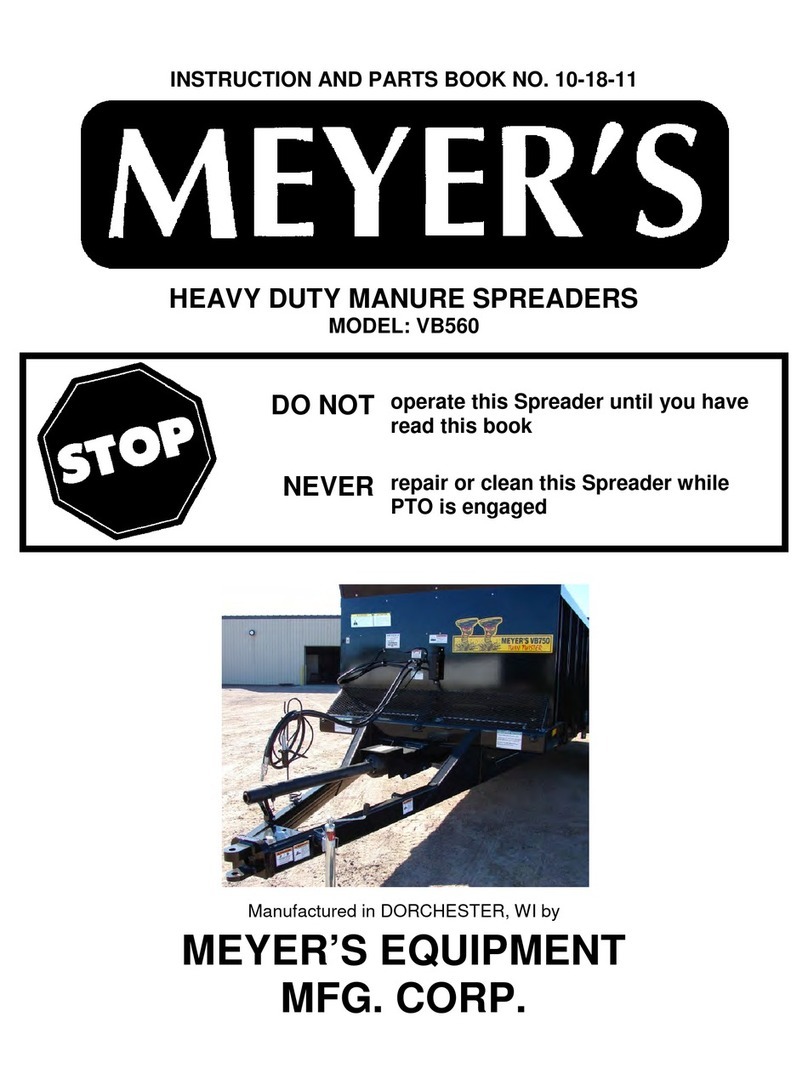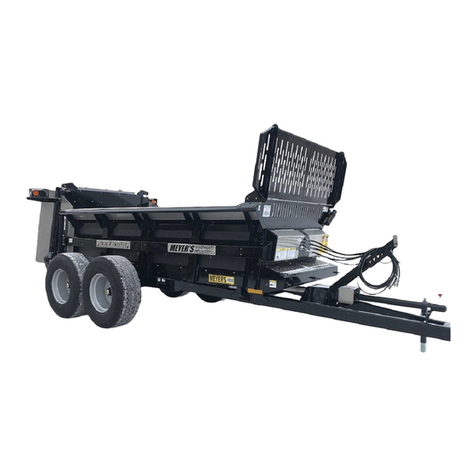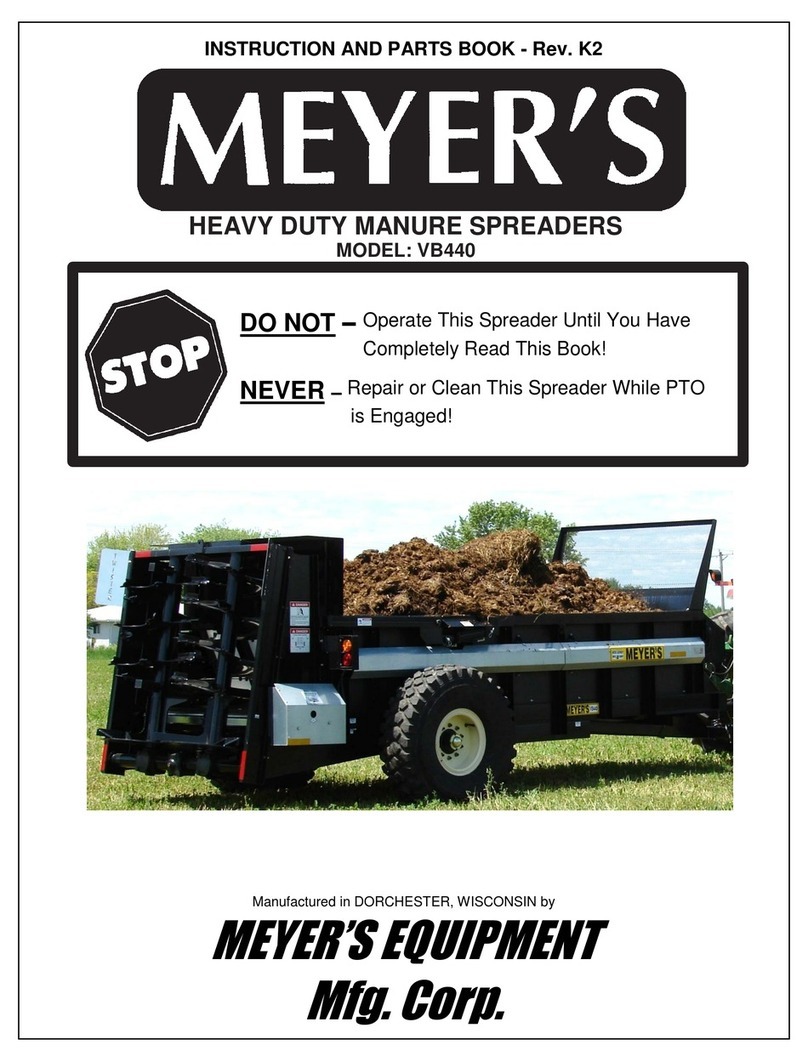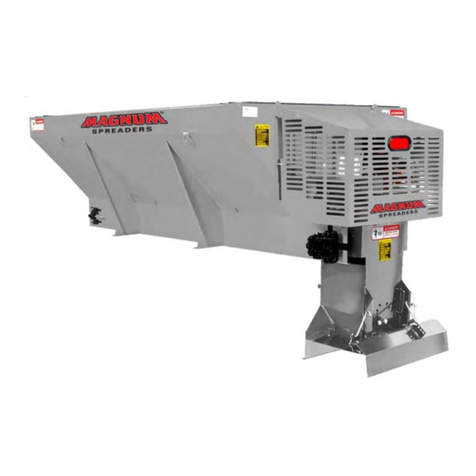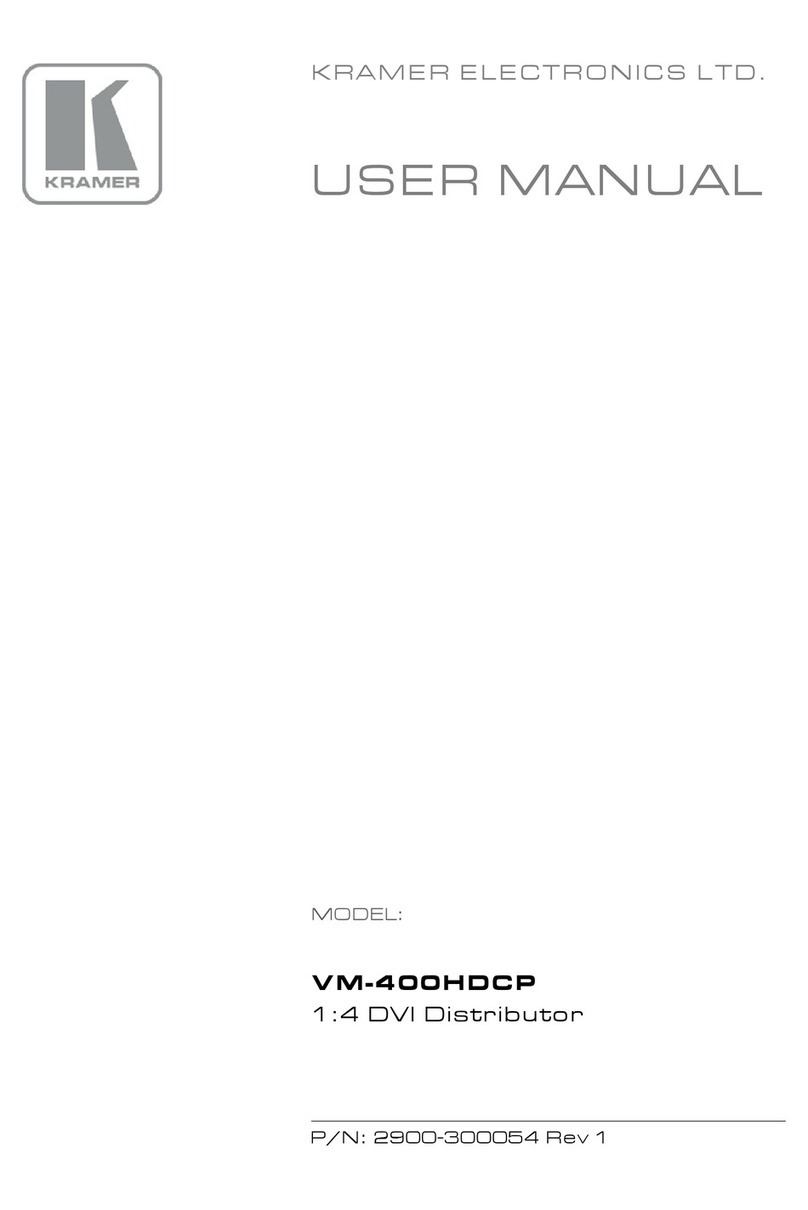
Page 3 MODEL: 3465
TABLE OF CONTENTS
INTRODUCTION ............................................................................................................................................................................ 2
SAFETY.......................................................................................................................................................................................... 4
SAFETY SIGNS.............................................................................................................................................................................. 6
MANURE SPREADER SAFETY..................................................................................................................................................... 8
PRE-OPERATION ........................................................................................................................................................................ 10
General..................................................................................................................................................................................... 10
Tractor Hitch And PTO Requirements ...................................................................................................................................... 10
ADMA Recommendations: ....................................................................................................................................................... 10
Tractor Size Requirements ....................................................................................................................................................... 11
Tractor Towing Size Requirements....................................................................................................................................... 11
Material Estimated Weight Per Cubic Foot........................................................................................................................... 11
Hydraulic System...................................................................................................................................................................... 11
General................................................................................................................................................................................. 11
Set Up for Open Or Closed Center Hydraulic Operation ...................................................................................................... 12
Electric Control Installation ................................................................................................................................................... 12
Transporting ............................................................................................................................................................................. 13
General................................................................................................................................................................................. 13
Use Safety Chain.................................................................................................................................................................. 13
Use Lights............................................................................................................................................................................. 13
OPERATION ................................................................................................................................................................................ 14
Tractor Hookup......................................................................................................................................................................... 14
Loading..................................................................................................................................................................................... 14
Unloading ................................................................................................................................................................................. 15
Mandatory Safety Shutdown Procedure ................................................................................................................................... 15
MAINTENANCE, ADJUSTMENTS & LUBRICATION................................................................................................................... 16
Automatic Over Running Clutch
..................................................................................................................................................... 16
Mandatory Safety Shutdown Procedure
......................................................................................................................................... 16
Adjustments.............................................................................................................................................................................. 16
Apron Chain.......................................................................................................................................................................... 16
Roller Chain Adjustment....................................................................................................................................................... 16
Tensioning V-Belt Drive ........................................................................................................................................................ 16
Lubrication ................................................................................................................................................................................ 17
Cleaning And Storage............................................................................................................................................................... 19
REPAIR PARTS ........................................................................................................................................................................... 20
Main Frame & Box Parts........................................................................................................................................................... 20
Hydraulic End Gate & Related Parts......................................................................................................................................... 22
Jack Assembly.......................................................................................................................................................................... 24
End Gate Hydraulic Piping........................................................................................................................................................ 26
Axles, Wheels, Spindles And Related Parts ............................................................................................................................. 28
Side Drive Train........................................................................................................................................................................ 30
Apron & Related Parts .............................................................................................................................................................. 32
Lube Bank ................................................................................................................................................................................ 34
Beaters & Related Parts ........................................................................................................................................................... 36
Front Drive Train....................................................................................................................................................................... 38
Beater Drive Train..................................................................................................................................................................... 40
E00344-05 540 RPM Beater Drive Gear Box ........................................................................................................................... 42
5490-0686 540 RPM Beater Drive Gear Box Complete ........................................................................................................... 44
Upper Beater Drive................................................................................................................................................................... 46
Model 3465 Apron Drive Gearbox ............................................................................................................................................ 48
Removable CV Telescoping Universal Joint Assembly With Over Running Automatic
Clutch & Guard, Trailer To Tractor............................................................................................................................................ 50
Removable CV Telescoping Universal Joint Assembly with Over Running Automatic
Clutch & Guard, Trailer to Tractor............................................................................................................................................. 51
Standard Hydraulic Apron-Flow Control On Spreader And Optional Electric Control ............................................................... 52
Optional Tractor Lever Operated Hydraulic Apron.................................................................................................................... 54
Chain Oiling Kit......................................................................................................................................................................... 56
Standard Highway Lighting With Amber Side Light .................................................................................................................. 57
LIMITED WARRANTY STATEMENT ........................................................................................................................................... 60

